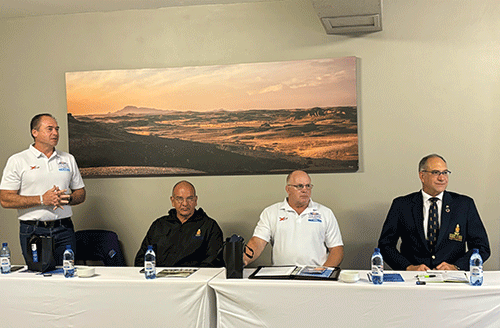SWAKOPMUND – The MTC Dome and the Department of Physiology in the University of Pretoria’s (UP) Faculty of Health Sciences have formalised a collaboration to bolster neuroscience research efforts.
The partnership, underscored by a recently-signed agreement, seeks to leverage the combined expertise and resources of both institutions to explore the connection between high-performance sport and neuroscience.
MTC Dome CEO Fanus Engelbrecht at a media briefing in Swakopmund on Monday noted the primary objective of this collaboration is to provide postgraduate physiology students from UP the opportunity to engage in research activities within the Neuroscience Lab, commonly known as the ‘brain gym’ at the MTC Dome.
“Students will participate in various tasks, including testing and interventions, to advance understanding of the relationship between neuroscience and sport performance,” he said.
He added that this collaborative endeavour is designed to facilitate a symbiotic exchange of knowledge and expertise between the two parties.
“Through hands-on experience in the Neuroscience Lab, students will enhance their practical skills, while generating valuable data for ongoing research endeavours.
“The outcomes of this partnership hold the potential to drive advancements in neuroscience, with broad implications for fields such as sports, medicine, psychology and cognitive science,” Engelbrecht said.
He highlighted the MTC Dome’s commitment to cover all expenses related to student participation to foster collaborative research and knowledge exchange, ensuring students can fully engage in this enriching academic experience.
The MTC Dome is the sole high-performance training centre in Namibia, providing state-of-the-art training facilities and support services to elite athletes across diverse disciplines.
The Dean of the Faculty of Health Sciences at UP, Tiaan de Jager, lauded the collaboration.
He highlighted UP’s commitment to research, and said the university is one of the top research-intensive universities.
“We are doing pretty well on the global rankings – and in medicine and many areas, we rank in the top 1% globally. Medicine and life sciences moved up significantly when most of the other universities dropped in the rankings, and one of the areas we improved in was anatomy and physiology, generally speaking, neurosciences,” Jager stated.
– Nampa


